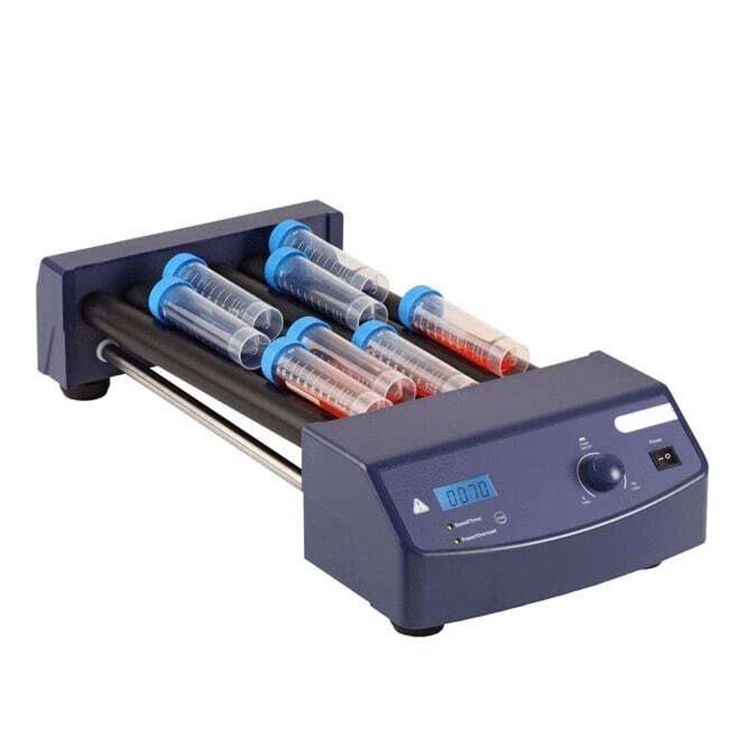Blood Roller Mixer MX-T6-S/Pro
The Blood Roller Mixer MX-T6-S/Pro is a roller mixer for blood samples, designed to ensure gentle and thorough mixing of samples in blood collection tubes. This instrument is often used in clinical and research laboratories, where homogeneous and consistent mixing of samples is essential. Key features of this mixer include its ability to process multiple tubes simultaneously, with a gentle rolling motion to ensure adequate mixing. Variable speed control allows for adaptation to different mixing requirements. The Pro version can offer advanced features or improvements over the standard model, thus meeting specific application needs. Overall, the Blood Roller Mixer MX-T6-S/Pro is a valuable tool for laboratories handling blood samples or other liquids requiring careful and uniform mixing.
Specifications: MX-T6-S/Pro
Amplitude : 24mm
Motor Type: Direct Current (DC) Motor
Rocking motion: Rocking and rolling
Amplitude : 24mm
Maximum load capacity: 4kg
Number of rolls: 6
Roller size [length]: 280mm
Speed range: 10 - 70 rpm
Speed display: LCD
Timer display: LCD
Time setting range: 1-1199 min
Weight: 5.1 kg
MX-T6-Pro
Main features
• LCD screen displays speed and time
• Speed range from 10 to 70 rpm
• Six-roller design for smooth rolling and easy cleaning
• Continuous or timer operation
• The method is standardized, and the mixing is carried out so as to cover 360°.
• Distinguish between different blood collection tubes and mix them with a more suitable speed, angle and number of rotations.
• Mixing strength is moderate to avoid anticoagulation failures and hemolysis.
• Labor intensity is low, efficiency is high, and waiting time for doctors and patients is reduced.
• There is no difference in mixing and standardization can be achieved.
MX-T6-S
Main features
- Speed range from 0 to 70 rpm
- Six-roller design for smooth rolling and easy cleaning
- The method is standardized, and the mixing is carried out so as to cover 360°.
- Distinguish between different blood collection tubes and mix them with a more suitable speed, angle and number of rotations.
- The mixing strength is moderate to avoid anticoagulation failures and hemolysis.
- The labor intensity is low, the efficiency is high, and the waiting time of doctors and patients is reduced.
- There is no difference in mixing and standardization can be achieved.



